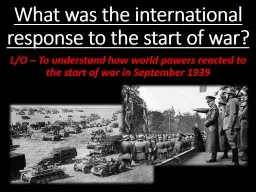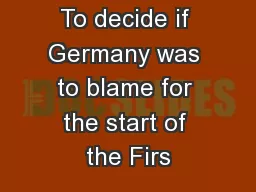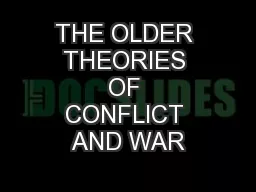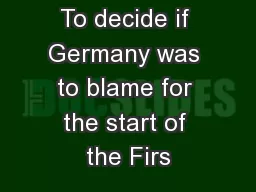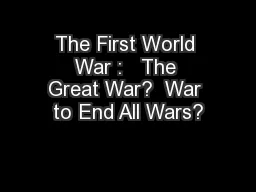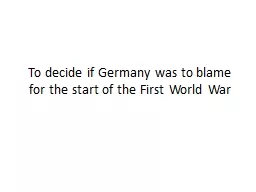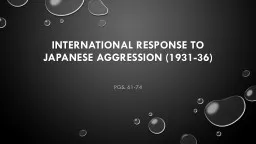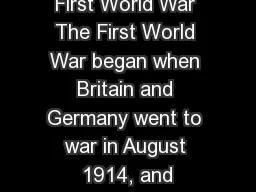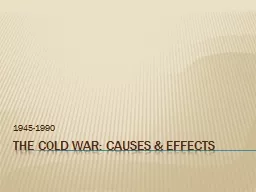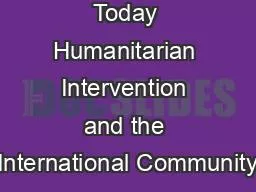PPT-What was the international response to the start of war?
Author : aaron | Published Date : 2017-08-23
LO To understand how world powers reacted to the start of war in September 1939 The Fall of Poland On 1 st September Nazi troops invaded Poland On 3 rd September
Presentation Embed Code
Download Presentation
Download Presentation The PPT/PDF document "What was the international response to t..." is the property of its rightful owner. Permission is granted to download and print the materials on this website for personal, non-commercial use only, and to display it on your personal computer provided you do not modify the materials and that you retain all copyright notices contained in the materials. By downloading content from our website, you accept the terms of this agreement.
What was the international response to the start of war?: Transcript
Download Rules Of Document
"What was the international response to the start of war?"The content belongs to its owner. You may download and print it for personal use, without modification, and keep all copyright notices. By downloading, you agree to these terms.
Related Documents

